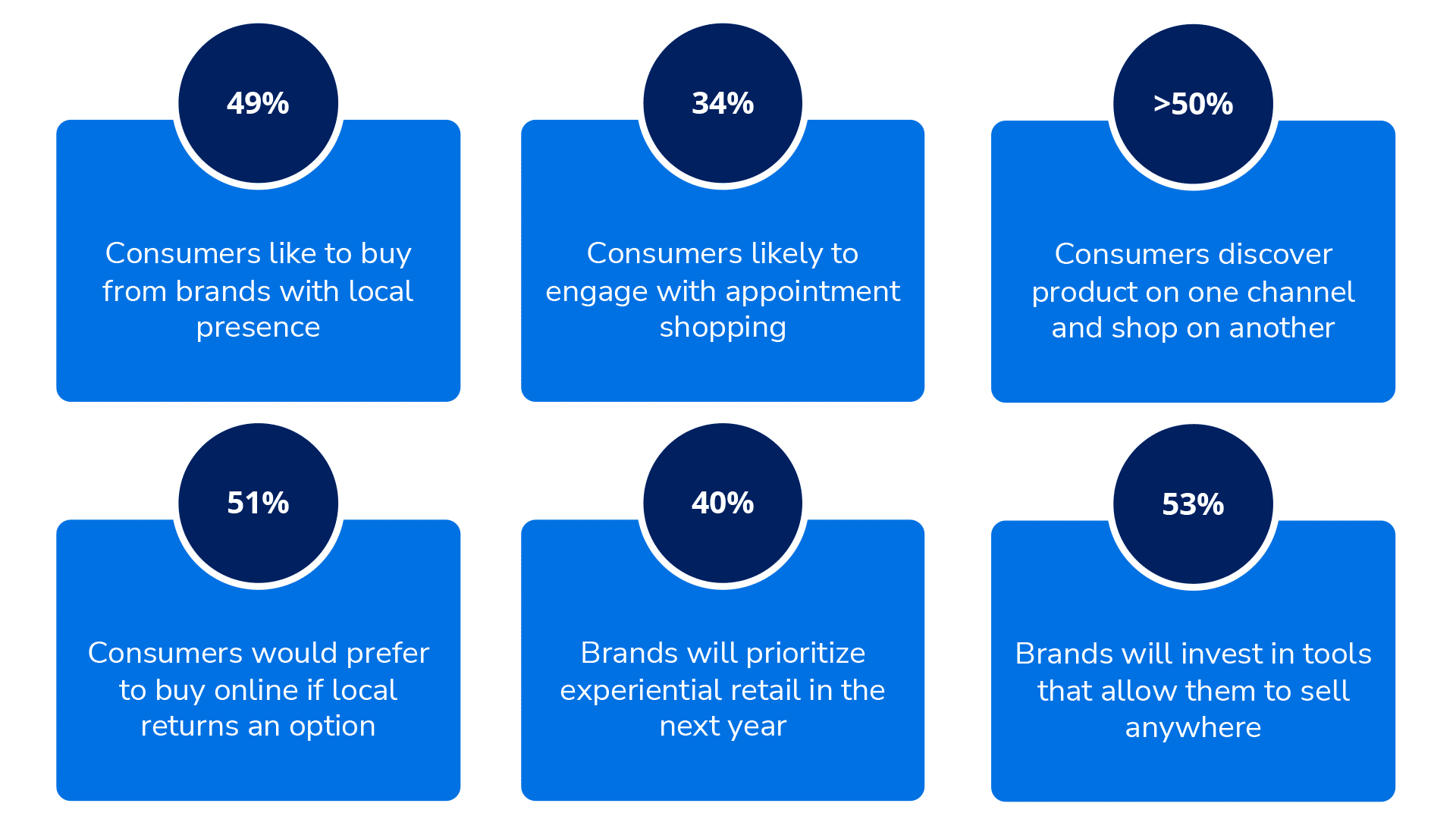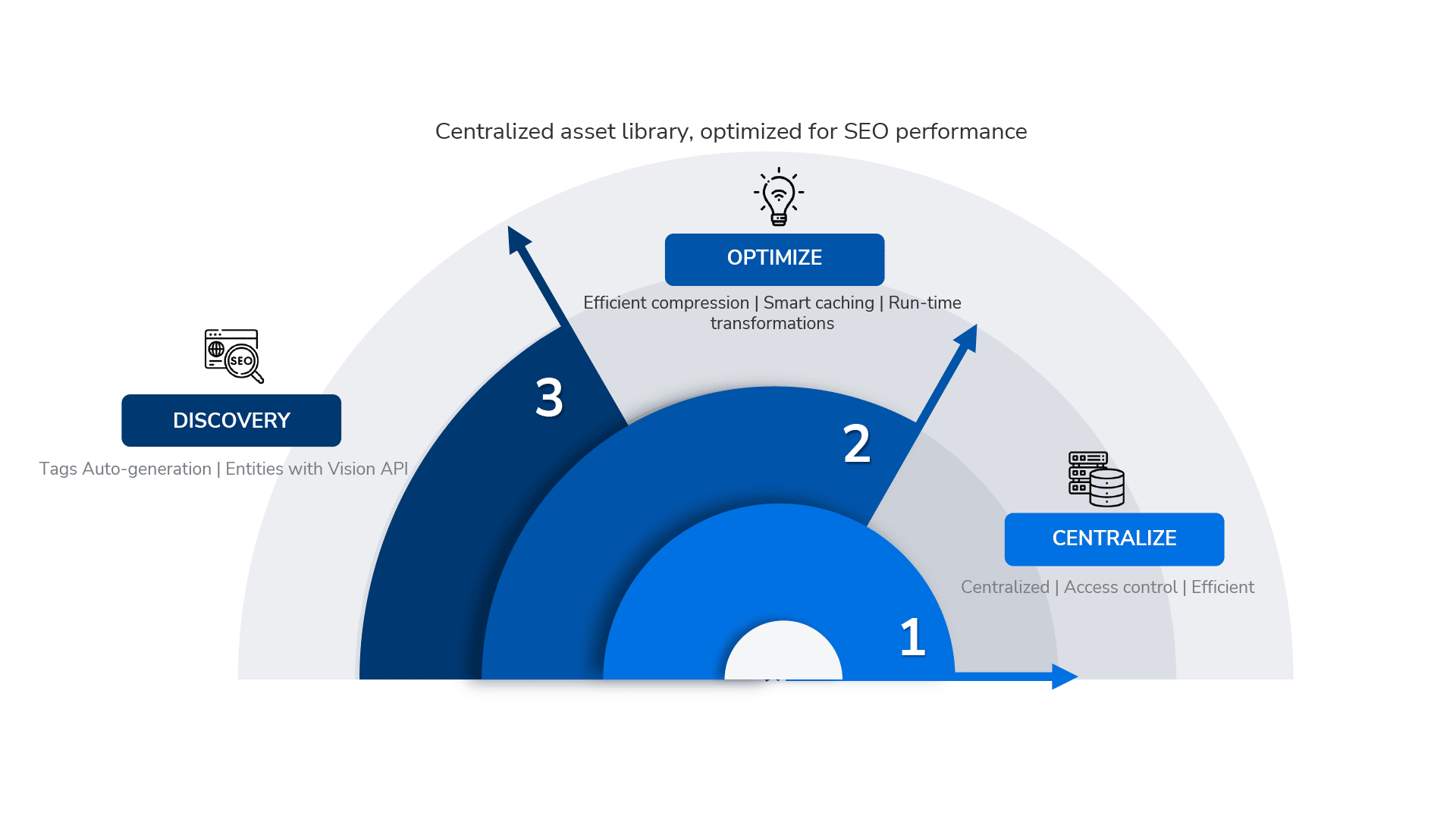Local search in 2023: Key trends and tactics for marketers
Learn the trends and factors impacting the local ecosystem and ways brands can deliver an engaging experience for local customers.
Today’s consumers want a personalized experience and engagement with local businesses through digital storefronts.
To gain the trust of local consumers, brands must focus on delivering quality interactions and relevant information.
This article will cover local trends that search marketers must know and do for 2023, along with insights from leading industry practitioners Greg Sterling and Mike Blumenthal, co-founders of Near Media, Joy Hawkins, Founder of Sterling Sky, and Dixon Jones, CEO of inLinks.
Local trends and factors impacting the local ecosystem
Consumers are moving from buying in-store to home shopping. Still, about 49% of consumers want to buy from businesses with a local presence.
Google is likewise focusing on delivering a phenomenal online shopping experience and bringing a variety of local businesses to shoppers.
The resurgence of local retail is among the top trends that will continue to evolve in 2023.

As we see a shift in consumer buying behavior, the need for high-quality, relevant content assets – from videos to real-time reviews and messaging options for consumer interaction – has become a must-have local tactic for 2023.
Complex customer journey and touchpoints
Local represents up to 40% of organic traffic for location-based businesses.
But the customer journey for local search is far from linear, encompassing various touchpoints and stages.

As a marketer, it is critical to think through all the stages and touchpoints, stitch data across multiple channels and then create the best customer experience possible.
Connecting various systems, from awareness to advocacy, is challenging but needs to be thought through to ensure a consistent omnichannel experience.
Videos and images matter
Local search is becoming more visual and interactive.
According to Sterling, TikTok has become an experiential search engine and Google sees the social platform as a competitor.
Younger audiences are looking for a visual experience and prefer to use TikTok over Google.
Google SVP Prabhakar Raghavan has previously noted that younger audiences go to Instagram and TikTok to find shopping and dining suggestions based on peer reviews – completely overlooking Google Search and Maps.
This is not the only reason why visuals are important.
Blumenthal found in a study that 36% of mobile SERPs are occupied by images. Hawkins shared that custom images on Google Posts got 4x more conversions than stock photography.
This means marketers must break their reliance on stock photos. Rather, use original high-quality images and videos for each product or category on Google Business Profile (GBP).
Google uses AI to understand entities, objects, logos, facial expressions and sentiments in images. Pictures of the same object can be understood differently.
It is good practice to validate the quality and relevancy of your images using Google’s Vision API to see what it understands the image to be.
Google’s AI algorithm rejects images categorized as too racy and might be false positives, but it is still crucial for a marketer to know the difference.
To yield better results, invest in high-quality images and centralize all photos to help establish quality scores based on image quality, relevancy, and entities for each image.

Videos can deliver relevant traffic. Yet, most businesses are not leveraging them in their marketing strategy.
Since video search is localized (based on the searcher’s location and the device they are using), video results can change. Once a video is clicked, it takes you directly to a website.
Darren Shaw of Whitespark shared how adding video to your GBP can significantly increase engagement and drive more traffic.
So to build solid discovery traffic, consider creating videos about:
- Your company.
- Your services and products.
- What to expect.
- Customer testimonials.
- FAQs.
Hawkins shares that simply adding discoverable videos can surge your traffic and help you secure quality traffic from channels like Google Discover.
A prime example is Instagram and TikTok, which got massive attention in 2022. Consumers preferred going to Instagram and TikTok to find restaurants, shopping, and entertainment.
Social media directly influences decisions based on experience factors through videos and images.
The importance of online reviews and ratings
Searchers rely on reviews and ratings to make purchase decisions. Reviews also play a critical part in Maps.
But with the increase in fraudulent activities, algorithms have the burden of enforcing stringent guidelines.
Last year, the Federal Trade Commission (FTC) killed review gating and said, “You cannot selectively publish reviews and suppress other reviews.” The FTC warned reputation platforms not to facilitate this in terms of fake reviews.
There’s also a growing concern about missing reviews. Google has rolled out clear guidelines for qualitative reviews and explains why reviews can be flagged and removed.
While businesses are encouraged to ask for reviews, Blumenthal noted that missing reviews are more frequent with newer listings. Thus, it’s a good idea to go slow in asking for reviews.
Local businesses need to deliver helpful content
The helpful content update should be a key consideration for every marketer and business as it addresses low-quality content and spam issues.
For location-based businesses, accessible, relevant, and fresh content is the golden key to winning. Ryan Levering, a Software Engineer at Google, shares the importance of ensuring your content is crawlable and relevant.
We have seen a significant impact in discovery traffic by adding location-based events with schema or FAQs. It is essential to judge current content and scores which do and don’t perform.
 100vw, 1920px” data-lazy-src=”https://searchengineland.com/wp-content/seloads/2023/02/Bringing_Local_Relevancy_Publish_Events_at_Scale.png” /></figure>
</div>
<p>Google started rolling out the helpful content update in August 2022. In December, they updated their quality rater guidelines and introduced <a href=) E-E-A-T which stands for:
E-E-A-T which stands for:
- Experience.
- Expertise.
- Authoritativeness.
- Trustworthiness.
How do you audit your content to make sure it is compliant? Let’s go over a five-step process to help determine if your content is helpful.
 100vw, 1920px” data-lazy-src=”https://searchengineland.com/wp-content/seloads/2023/02/Milestones_5Step_Process_To_Helpful_Content_On_Your_Website.png” /></figure>
<ul>
<li><strong>Content audit</strong>: Audit your existing content, conduct a competitor gap analysis, and research keywords.</li>
<li><strong>Content scorecard</strong>: Grade your existing content to see how helpful it is.</li>
<li><strong>Content marketing plan</strong>: Based on the above, create your marking plan and content calendar.</li>
<li><strong>Scalable content creation</strong>: SEO best practice content creation/optimization aligned with your business goals. Ensure informational, navigational, and transactional coverage.</li>
<li><strong>Measure impact</strong>: Ensure you can measure content performance through tracking and reporting.</li>
</ul>
<p>Businesses need to know if their content is relevant, qualitative, accessible, authoritative, and experiential.</p>
<p>The first step for all content is to map your audience’s personas, goals, and touchpoints with a helpful content scorecard that covers:</p>
<ul>
<li><strong>Availability</strong>: Ensure your content is discoverable and available. Do you have content gaps and opportunities that you could cover?</li>
<li><strong>Visibility</strong>: What is the percentage of visibility of your identified relevant terms?</li>
<li><strong>Qualitative:</strong> Where is your content regarding rich results, featured snippets, and Q&A results? How can you increase the visibility of your rich results?</li>
<li><strong>Entity Coverage</strong>: How many entities have you covered? Do you have entity gaps?</li>
<li><strong>Performance Data</strong>: Your organic traffic data helps uncover your potential based on positions, click rates, bounce rates, time on site and conversions, and transactional revenue.</li>
</ul>
<p>By implementing topical entity-first content, brands significantly increase their visibility.</p>
<p>All forms of content, including videos, FAQs, relevant images, PDFs, and expert advice should be included in the helpful content strategy.</p>
<p>Map your present content across the touchpoints of the customer journey as part of your content strategy plan and work to fill any content gaps.</p>
<h2 id=) Scaling and operationalizing local for multi-location businesses
Scaling and operationalizing local for multi-location businesses
For multi-location businesses, scaling content can be challenging.

Here are simple steps to help you scale.
- Understand all the channels customers use to find your business: Think through all the possible stages and channels your customers use to find your business. Then, create the best experience through the journey across all touchpoints. It is critical to know, where your customer is, what they are looking for, and what their intent is.
- Connect customer touchpoints: Ensure that all touchpoints are connected, from awareness and discovery, consideration, conversation, and the final purchase to advocacy.
- Ensure all assets and critical business information are centralized: Everything is considered content in search. To avoid confusion in the ecosystem, all assets (e.g., images, videos, PDF files) must be centralized in an asset library.
- Personalize and localize based on audience information: Personalize your assets based on your target audience, what they need to solve their problem, and how they search for their answers.
- Make your assets discoverable across all channels: The most critical thing for businesses is not to create the same asset repeatedly. Optimize your most vital assets and ensure they are discoverable across all channels.
- Distribute at scale for a multi-location business: Distribution of content assets across all channels. From your website, local landing pages, and across all local channels.
- Measure the impact: Benchmark your local presence against your competition. Measure Advanced tracking of local performance across top channels such as Google, Bing, and Facebook – Request Directions, CTA clicks, and call buttons.
Using AI for local
Google is using deep learning and AI algorithm to surface local SERPs. Businesses can leverage AI models and ChatGPT to help with a few main industry problems.
- Vision search: Ensure the relevant image is used with the proper category labeling.
- Topical content: Create content briefs for localized content, including title, meta, keyword research, schema, and summaries.
- FAQ: Research, create and optimize frequently asked questions.
- Audience insights: Glean opportunities, patterns, and learnings.
Using an AI model to automate manual tasks is good, but we must remember that deep strategy or finetuning content will still require a human touch.




